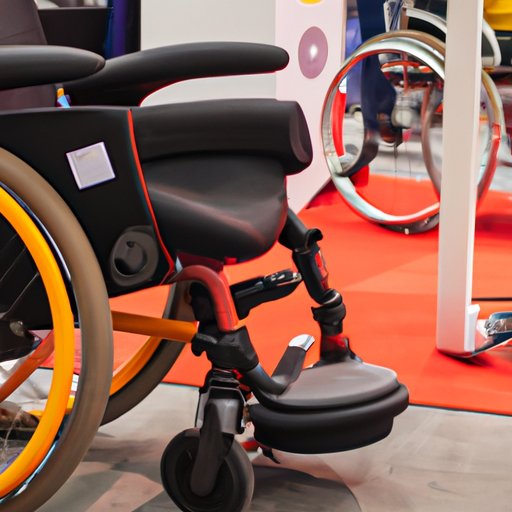Introduction
Adaptive equipment is any product or device that can be used to meet the needs of a person with a disability. It is designed to improve the user’s ability to function independently and safely. Adaptive equipment is also known as assistive technology, and it can range from simple items such as adaptive eating utensils to complex electronic devices.
The purpose of adaptive equipment is to help people with disabilities overcome barriers they may face in daily activities. This can include physical, cognitive, or sensory impairments. The goal of using adaptive equipment is to provide people with the tools they need to live more independent, productive, and satisfying lives.
Types of Adaptive Equipment
There are many different types of adaptive equipment available. These include:
Mobility Aids
Mobility aids are designed to help people who have difficulty walking. Examples of mobility aids include wheelchairs, walkers, and canes. They can be manual or powered, depending on the user’s needs.
Assistive Technology
Assistive technology is any device that helps a person with a disability to perform tasks that would otherwise be difficult or impossible. Examples of assistive technology include voice recognition software, speech-generating devices, and Braille displays.
Environmental Controls
Environmental controls are devices that can be used to control lights, appliances, and other elements of the environment. They can be operated by voice commands, remote control, or other means. They are often used to increase independence for people with disabilities.
Seating and Positioning
Seating and positioning products are designed to provide support and stability for people with physical disabilities. These products can help maintain proper posture, reduce the risk of pressure sores, and promote comfort. Examples of seating and positioning products include cushions, wedges, and standing frames.
Personal Care
Personal care products are designed to assist people with disabilities in performing everyday tasks such as bathing, dressing, and grooming. Examples of these products include grab bars, shower chairs, and dressing aids.

Benefits of Using Adaptive Equipment
Using adaptive equipment can provide many benefits for people with disabilities. Some of the most common benefits include:
Increased Independence
Adaptive equipment can help people with disabilities to be more independent. By providing access to tools and resources that would otherwise be difficult or impossible to use, adaptive equipment can help people to live more independently.
Improved Quality of Life
Using adaptive equipment can also lead to improved quality of life. People with disabilities can use adaptive equipment to perform everyday tasks more easily, which can lead to increased confidence and self-esteem.
Increased Safety
Adaptive equipment can also help to increase safety for people with disabilities. For example, wheelchair ramps and handrails can help to prevent falls, while special lighting can help to reduce the risk of accidents.
Cost of Adaptive Equipment
The cost of adaptive equipment can vary widely, depending on the type and complexity of the device. In general, there are two main components to consider when looking at the cost of adaptive equipment: initial costs and ongoing maintenance.
Initial Costs
The initial cost of an adaptive device can range from a few hundred dollars to several thousand dollars. Factors that influence the cost include the type of device, its complexity, and the materials used in its construction.
Ongoing Maintenance
In addition to the initial cost of the device, there may also be ongoing maintenance costs associated with its use. This could include repair costs, replacement parts, and regular servicing. It is important to factor these costs into the overall cost of the device when making a purchase decision.
Role of Occupational Therapy in Adaptive Equipment
Occupational therapists play an important role in helping people with disabilities to choose and use adaptive equipment. An occupational therapist can assess the individual’s needs and recommend the appropriate adaptive equipment. They can also provide education and training on how to use the device safely and effectively.
Case Studies
To get a better understanding of how adaptive equipment can be used, here are three case studies of individuals who have benefited from using adaptive equipment:
Example 1
A woman with cerebral palsy was unable to walk due to her condition. She was prescribed a powered wheelchair, which allowed her to move around independently and participate in activities she previously could not do. Her quality of life was greatly improved by using this adaptive equipment.
Example 2
A man with hearing loss was having difficulty communicating with his family and friends. He was able to purchase an assistive listening device, which helped him to hear more clearly and communicate more effectively.
Example 3
A woman with arthritis was having difficulty performing everyday tasks such as cooking and cleaning. She was able to purchase adaptive kitchen utensils and cleaning supplies, which made it easier and safer for her to perform these tasks.
Conclusion
Adaptive equipment can be a valuable tool for people with disabilities, helping them to increase their independence, improve their quality of life, and remain safe. There are many different types of adaptive equipment available, and the cost can vary widely depending on the device. Occupational therapists can help people to choose and use the right adaptive equipment for their specific needs. With the right equipment, people with disabilities can lead more independent and fulfilling lives.


